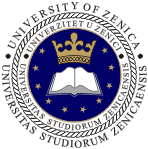CHARACTERIZATION OF LIMESTONE AND DOLOMITE FILLERS FOR INDUSTRIAL APPLICATIONS
Fillers play a crucial role in enhancing product performance and reducing production costs. To be used in various industries, fillers must be readily available, affordable, pure, non-toxic, and meet specific physical and chemical standards. This study examines limestone and dolomite fillers, focusing on their chemical composition, mineralogical pro...
By Nedzad Haracic, Nevzet Merdić, Ilhan Bušatlić, Nadira Bušatlić, Adelina Pašalić
OPTICAL MICROSCOPY EVALUATION OF PORTLAND CEMENT CLINKER - ACETIC ACID ETCHING PREPARATION
The microscope has become a more common tool in the cement industry. Evaluation of clinker using microscopy is a powerful technique that can help improve clinker production and cement quality. The key to using the microscopy is understanding the process of clinker production namely how raw materials are transformed into clinker. These transformatio...
By Nevzet Merdić, Nedžad Haračić, Ilhan Bušatlić, Nadira Bušatlić, Adis Merdić
THE INFLUENCE OF THE PHOSPHORIC ACID AND CLAY ON THE PHYSICAL AND MECHANICAL PROPERTIES OF REFRACTORY CONCRETE
In recent decades, the interest in refractory materials which are formed without baking - by chemicalbonding - has increased significantly, as their production is less complex and more economical thanthe production of classical refractory materials, which involves a long baking process. In this work,as a chemical binder, phosphoric acid, which is i...
By Nadira Bušatlić, Ilhan Bušatlić, Nedžad Haračić, Nevzet Merdić
THE EFFECTS OF THE DISTRIBUTION COEFFICIENT ON THE PROPERTIES OF THE REFRACTORY CASTABLES FROM THE CHAMOTTE WASTE AND CLAY “RAPAJLO”
The paper examined the conventional castables composed of a mixture of high aluminate cement with 70% Al2O3, chamotte waste with 42% Al2O3 and brick clay ,,Rapajlo“. The influence of particle size distribution on density, porosity, water absorption, modulus of rapture and cold crashing strength was investigated. Particle size distribution was...
By Marina Jovanović, Adnan Mujkanović, Nadira Bušatlić
POSSIBILITY OF THE PRODUCTION OF CEMENT TYPE CEM I 52,5R IN CEMENTPLANT KAKANJ
This study is about possibility of the production of CEM I 52,5 in cementplant Kakanj satisfying some requirements for cement quality issued by EN 197-1. By EN 197-1, CEM I 52,5R consists of 95-100 % clinker and minor additional constituents of 0 - 5 %. Fly ash and granulated blast furnace slag are used as minor constituents in this study. The lowe...
By Ilhan Bušatlić, Nadira Bušatlić, Nevzet Merdic, Nedzad Haračić, Amila Music
